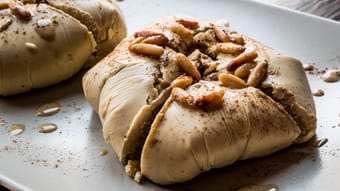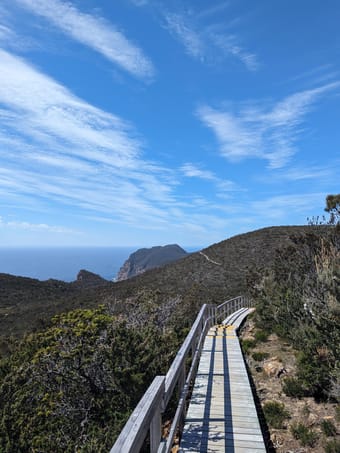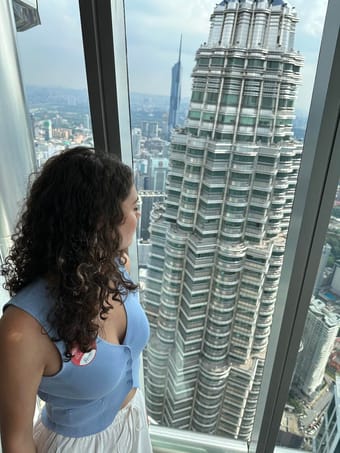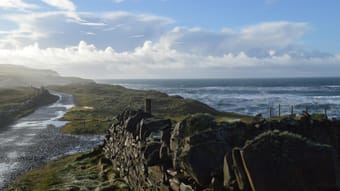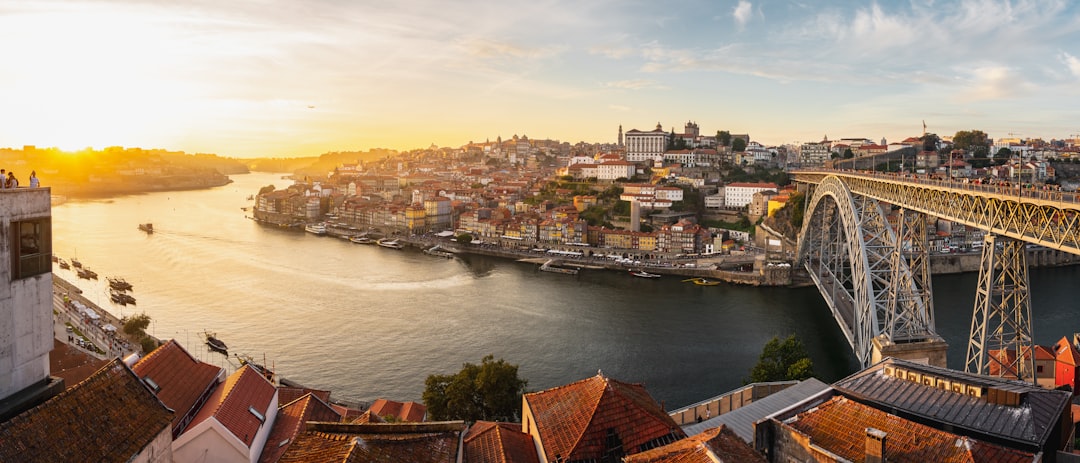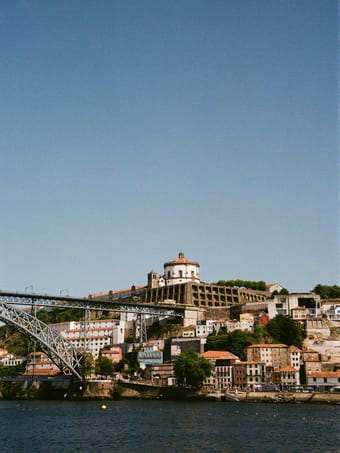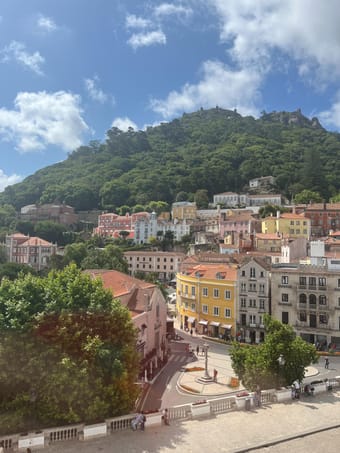Results for Hungary History
Ghana is an incredible country filled with friendly people and plenty to explore.
While 10 days is a bit of a whirlwind, it’s enough time to get a solid taste of Ghana—culture, history, nature, and a bit of adventure all wrapped up between Accra and Cape Coast. I’ve designed this itinerary to strike the right balance between activities and downtime, so you can get the most out of your trip without feeling totally wiped out by the end.
I’ve also organized each day’s activities in a way that makes the most sense for efficiency (and to avoid too much time stuck in Accra’s traffic). Trust me, a little strategic planning goes a long way here.
I don’t recommend a lot of specific restaurants unless they’re near the stops and I can vouch for them. Ghana has plenty of hidden gems when it comes to casual dining, so it’s best to go with the flow and choose a spot close by when you get hungry. Just don’t wait until you’re starving—food prep in Ghana can take a bit of time. That said, street food and chop bars (local eateries with ready-made dishes) are great, fast options when you’re on the go.
There are certain activities where you'll need to hire a driver. I can easily recommend Junior. He knows everywhere and everyone and he's a great driver. His specialty is Cape Coast, but he's very well-versed in Accra, too. Just call or WhatsApp him to make arrangements: +233 024 473 6171.
If Junior isn't available, just ask at your hotel or hit up a Bolt driver that you like and think will give you a fair price, (always negotiate first).
Two apps you’ll want to download for your trip
Bolt - It’s like Uber, but local, and it works in both Accra and Cape Coast.
Pro Tip: Always opt to pay in cash when using Bolt. Trust me on this – drivers are much more motivated to show up when they know there’s cash waiting at the end of the ride!
Glovo – Food delivery in Accra. If your hotel doesn’t have a restaurant and you just don’t feel like going out, this is a good way to get fed. It can be slow, though, so order early.
50+ • Backpacker • Business • Couples • Family • Digital Nomads • Groups • Plus Size • Female Solo • Car-free • Adventure • Architecture • Art • Boutique • Budget • Coffee • Design • History • Outdoors • People & Culture • Photography • Road Trip • Shopping • Slow Travel • Relaxation • Foodie
$45.00
0
Are you hungry? Want to get some amazing eats? Here are my top 5 restaurant recommendations in my favorite part of Minneapolis, Northeast (NE). My family grew up in this part of the city and I taught for 8 years at a local school, so this neighborhood holds a special place in my heart.
50+ • Accessibility • Backpacker • Business • Car-free • Couples • Digital Nomads • Family • LGBTQ+ • Pets • Plus Size • Female Solo • Vegan • Vegetarian • Adventure • Art • Budget • Coffee • Design • Foodie • History • People & Culture • Photography • Slow Travel • Wellness • Wine
Free
0
Enter the charming neighborhood of Brera and you’ll soon forget all thoughts of the drab, industrialist Milan. Bohemian grit began to fill the cracks between the uneven cobblestone streets here after WWII, and by the 1960s, the local cafes and galleries brimmed with neorealist filmmakers and designers vying for the Compasso d’Oro award. Due north from Milan’s tourist-filled Duomo and past the storied La Scala, austere, modern palazzos make way for colorful residential buildings, their balconies overflowing with succulents, wisteria and honeysuckle. The name Brera comes from the Lombard word ‘Braida’ which means ‘green space.’ Once a fishing village where boats arrived on canals into Milan from the Northern lakes, today it is considered the most bourgeois neighborhood in Milan.
To experience a hint of old-world Brera is to shop at the weekly outdoor mercato on Via San Marco, notable for its colorful, overflowing bouquets, ample fresh fish selection, multiple produce stands and Italian fashion staples such as leather gloves and cashmere sweaters. On the winding pedestrian streets, worthwhile boutiques and vintage shops are mixed with tourist-hungry restaurants (to be avoided – I recommend the old-school trattoria tucked away nearby). Brera freshly exhibits a new generation of designers and concept boutiques, and admiration of the supermodel-esque locals.
Although more recently famous as a creative’s haven in the 1960s, Brera has for centuries attracted artists and designers who came to study at the art academy within the internationally celebrated museum Pinacoteca di Brera. Soon after it opened, Napoleon, the newly crowned King of Italy, is said to have intended the Pinacoteca to become the Louvre of Italy (Antonio Canova’s colossal marble statue of the monarch sits at the center of the palazzo courtyard today). To follow in the brushstrokes of the prestigious academy’s centuries of attendees is to shop at the historic art supply and print shop Ditta Crespi or flip through the engraved leather journal selection at Pettinaroli.
Couples • Groups • Shopping • Foodie • History • Design • People & Culture • Romantic • Coffee
Free
11
Don't stress as you plan a romantic or family day trip to this famous city. Take a look at this guide to find the must see attractions and eateries to make your trip flawless.
This guide gives you breakfast, lunch and dinner spots that won't leave you hungry for more. These spots are all local, small businesses - so that you know you're getting the true Cambridge greeting and are supporting amazing independent places.
The must see attractions are listed in this guide too, along with a days itinerary - for if you want to follow a foolproof plan.
50+ • Couples • Family • Adventure • Architecture • Art • Boutique • Foodie • History • Nature • People & Culture • Romantic
Free
1
Hungry in Istanbul
Istanbul for Foodies - Local's Guide to Food & Drink Spots on the European Side of Istanbul, Turkey
If you are traveling for food, and food is the first thing that you search for before your trip, this guide is for you!
As a local from Istanbul, I collected my favorite food and drink spots located on the European side, in addition to the must-try food items.
Although the majority of the places are located in famous neighborhoods such as Fatih (Historical Peninsula), Karakoy, Beyoglu, Besiktas, and Tarabya, sometimes you need to get away from the center to find the best food. This guide also covers these off-the-beaten-track locations.
⬇️⬇️⬇️⬇️
The list contains the following sections:
✔️Breakfast 🍳🥯
✔️Fine Dining 👩🍳⭐🍾
✔️Kebab
✔️Authentic Turkish Cuisine & Street Food 🥘🌯🌭
✔️Meyhaneler (Meze & Rakı Places) & Seafood Restaurants🐟🧊
✔️Pubs/ Cocktail Bars/Wine House 🍷🍺🍸
✔️International Cuisine 🍣🍱🍜
✔️Traditional Sweets, Patisserie and Cafes 🍰🍨☕
Foodie • History • People & Culture • Romantic • Cafes • Luxury • Boutique • Budget • Slow Travel • Wine • Coffee
$7.00
5.0
(4)
15
This complete itinerary has everything you need to know in a neat and structured way so that you are maximising your time, hitting the right places, at the right time and in the right area, including:
➡️ airport flights and transport options (with prices)
➡️ accommodation options
➡️ local information such as weather, currency etc.
➡️ a recommended schedule to include sights, attractions, restaurants and bars
➡️ and more
leaving you with nothing to worry about other than enjoying your trip to Jersey!
Please let me know if there is anything specific you would like me to include that I have missed as I can revise this itinerary for you.
Female Solo • Adventure • Architecture • Budget • Coffee • Foodie • History • Outdoors • People & Culture • Photography • Road Trip
$20.00
5.0
(1)
1
Prince Islands are my favorite locations in Istanbul, and I believe they should be on the top of your places-to-visit list.
Here you will find old mansions built in the 19th & 20th Centuries, and hiking trails with splendid sea 🌊 and forest🌳 views.
You can escape from the hustle and bustle of the big city by enjoying a 30 min-long ferry journey 🚢.
In this free guide, I collected the best places to have a meal/ drink in Prince Islands (Büyükada, Heybeliada, Burgazada & Kınalıada).
Foodie • People & Culture • Slow Travel • Beach • Budget • Luxury • Boutique • History • Wine • Coffee
Free
29
Kilkenny is a medieval town located in the southeast of Ireland. Though it may not be as popular as Dublin, there are still plenty of things to see in Kilkenny. With that being said, below are 36 checkmarks to add to your Kilkenny Bucket List.
Couples • Groups • 50+ • History • Architecture • Art • People & Culture • Design • Nature • Photography • Foodie • Shopping • Romantic • Coffee • Relaxation
Free
5
In this FREE guide, we offer three dog-friendly hikes that are easy to access, easy-moderate in difficulty, showcase a variety of scenery, and are sure to blow away both humans and doggos. We also offer two great spots for food/drinks/vibes, perfect for chilling out after hiking, and two suggestions for hotels if you're making a weekend out of it (All pet friendly!)
This guide is perfect if you're in new to the area, or visiting for a couple days. If you want to hit some stellar Boulder spots the way locals do, grab this guide and hit the trails!
With each trail, you'll find:
-Trail description & photos
-Access & parking considerations
-Personal opinions on highlights
-Considerations for success with your puppers
-Alltrails links so you can find the exact trailhead coordinates and see other hikers' reviews
Tips are always appreciated, and additionally check out my variety of low cost guides that offer larger curated collections of trails to try out.
Families • LGBTQ+ • Digital Nomads • Plus Size • Solo Female • Pets • 50+ • Couples • Groups • Vegetarian • Vegan • Gluten-free / Celiac • Adventure • Budget • Wellness • History • Design • Nature • Photography • Road Trip • Mountain • Relaxation • Architecture • Foodie • People & Culture • Van Life • Wine • Coffee
Free
3
Struggling to plan a trip to Tassie? Look no further! This 10 day itinerary is the result of hours of planning, research, chats with experts and includes an interactive map, restaurant guides, accomodation options and hiking routes. This is the exact route we used earlier this year, and enabled us to have the trip of a lifetime.
The guide includes everything that we wish we knew before hand, anything that went wrong, and little surprises and adventures along the way.
Tag us in your photos and posts - we'd love to see how the trip worked for you! @fi_and_alex_travels
Backpacker • Couples • LGBTQ+ • Car-free • Groups • Family • Digital Nomads • Female Solo • Plus Size • Pets • Business • 50+ • Adventure • Budget • Camping • Boutique • Coffee • Foodie • History • Luxury • Outdoors • Overlanding • People & Culture • Photography • RV • Relaxation • Road Trip • Romantic • Slow Travel • Sustainable/Eco • Van Life • Wellness • Wine
$15.00
2
Fly A.
Available for hire
Tokyo Family Magic: 4 Days of Disney Dreams, Cultural Delights & Unforgettable Adventures!
This itinerary offers a captivating 4-day journey through Tokyo, carefully curated for families seeking enchanting experiences and unforgettable adventures. Explore Tokyo's rich cultural heritage at iconic landmarks like Senso-ji Temple and Edo-Tokyo Open Air Architectural Museum, and unwind with scenic cruises and serene park strolls. With a perfect blend of Disney dreams, cultural delights, and family-friendly fun, Tokyo Family Magic ensures cherished memories for all ages.
Family • Car-free • Couples • Female Solo • Groups • Foodie • Shopping • History • People & Culture • Adventure • Relaxation • Budget • Art
Free
0
Kuala Lumpur often doesn't get the credit it deserves 🛑 Skip the hours of research and get my ultimate Kuala Lumpur itinerary for up to 4 days (including one overnight stay at a nearby place).
What’s included in my guide?
🛫 Everything is planned for you: you have all the details to craft your perfect stay in KL, all you need to do is book.
🚍 Logistics made easy: Links to book transportation and hotels for different budgets.
📅 In-depth details: Best times to visit, daily itinerary, and price ranges for various activities and accommodations.
🔑 Essential tips: Avoid any problems with info on visa and other requirements as well as tips to make your trip easier.
🌟 Local gems: Top restaurants and must-do activities
🗺️ Interactive map: An interactive map with 33 places linked, plus additional links to activities and hotels.
From someone who has experienced it all firsthand and is heading back this summer, I’ve got you covered. 🌟
P.S. Download the Thatch app for a better viewing experience!
Couples • Groups • Digital Nomads • Business • Backpacker • 50+ • Boutique • Budget • History • Foodie • Luxury • Relaxation • Romantic
$8.00
$10.00
20% off
5
Driving on the left side of the road for bog & a pint! This guide has recommendations for things to see, do, and eat in Dublin, Galway, & Killarney Ireland.
Backpacker • 50+ • Couples • Digital Nomads • Family • Groups • LGBTQ+ • Pets • Female Solo • Adventure • Budget • History • Outdoors • People & Culture • Photography • Relaxation • Road Trip • Romantic • Van Life • Wellness
Free
8
This guide gives you all the recommendations you need for a trip to Porto. Make your friends jealous with the amazing story's you can tell them by using this guide to Porto.
Porto is one of the oldest tourist destinations in Europe - and it is easy to see why. Home to rich artistic heritage, Port wine, panoramic viewpoints and a friendly cultural, these are just some of the reasons that you will fall in love with this city.
This itinerary includes:
⛺️Where to stay; with guidance on the best places depending on budget, location and comfort.
🥘 Where to eat; with guidance on where to find gluten free, vegetarian and vegan options, as well as cater to all budget types.
🍷Where to drink; with guidance on where to find the best of your favourite beverage.
🎡 What to see and do; with guidance on what is considered unmissable and help finding memorable excursions for all budget ranges.
My own visit to central Porto was 5 days and much of the recommendations are based on the experiences I had.
🧘♀️To see more trip itineraries in Portugal, and across the world, visit my profile.
Vegan • Vegetarian • Digital Nomads • Car-free • Adventure • Architecture • Art • Faith • Foodie • History • People & Culture
Free
2
4 Days in Porto, Portugal
This ultimate Porto, Portugal guide will show you what this majestic city has to offer from architecture, restaurants, port wine cellars, and more! It includes an interactive map, 29 places and things to do, as well as a Michelin-star restaurant! This guide is mobile-friendly so take it with you while exploring the city and don't miss a beat!
*save this guide for a future trip.*
Foodie • Architecture • History • Shopping • Wine • Coffee • Beach • Romantic
$20.00
1
A guide to some of the most iconic spots you cannot miss during your visit to the beautiful city of Porto
This guide includes:
-most popular Porto landmarks and spots
-churches and cathedrals
-lookouts
-wineries
-food and drink recommendations (breakfast, lunch, dinner, dessert)
Perfect guide for those in the beginning stages of planning their trip to Porto or those with very limited time in the city but wanting to see all the iconic landmarks
Car-free • Couples • Digital Nomads • Family • Groups • Female Solo • Business • Architecture • Art • Budget • Foodie • History • People & Culture • Photography • Romantic • Wine
Free
0
The best guide for anyone looking for an introduction to the beautiful city of Porto!
The perfect guide for first time visitors (or even returning travelers) wanting to explore as much of the city as possible. Choose where to go, what to see, and where to eat from the many available options
This guide includes:
-Things to do/see in Porto
-Places to eat and drink
-Museums, churches, parks, and lookouts
-Wineries
-General tips and personal recommendations
Car-free • Couples • Backpacker • Digital Nomads • Family • Groups • Female Solo • Architecture • Art • Budget • Coffee • Foodie • History • People & Culture • Photography • Slow Travel • Wine
$10.00
0
Portugal is a gorgeous country just west of Spain. I love Portugal, because of the dramatic coastline, stunning architecture, picturesque villages, friendly locals, and more. Portugal is my favorite country and it may be yours by the end of your time in Portugal.
In this guide you will have...
- access to an interactive map
- a detailed guide to Porto, Lisbon, Aveiro, and Nazare
- where to eat
- where to stay
- what to do
- the best tours to take
- how to get from city to city
This guide to Northern Portugal has all of the information you could need. I have spent tons of time in Portugal, as my family comes from the country so this guide features all of the local spots!
Follow me on instagram for more travel content! @daisymaclellan
I plan trips - Please reach out if you are interested!
daisy.maclellan10@gmail.com
50+ • Digital Nomads • Female Solo • Family • Backpacker • Groups • Car-free • Pets • Adventure • Design • People & Culture • Shopping • Slow Travel • Photography • Faith • Architecture • Foodie • Art • Boutique • History • Luxury • Budget • Camping • Coffee • Road Trip • Wellness • Wine • Sustainable/Eco • Romantic • Relaxation • Outdoors • Overlanding
$5.59
1
Ask ThatchGPT





